I used to think back pain was just part of getting older—until it started waking me up at 3 a.m. with no mercy. I tried stretching, new pillows, even a heating pad under the covers, but nothing helped until I finally figured out how to choose the best hybrid mattress for back pain relief. A hybrid mattress blends sturdy support with soft comfort layers—think of it like a perfect tag team for your spine. In this guide, I’ll walk you through what actually worked for me, plus what to avoid, so you can find the best hybrid mattress for your body and your sleep. Let’s dive in and find you some real relief.
What is a Hybrid Mattress? (Related Keyword: Hybrid Mattress for Back Pain Relief)
If you’re like me, you probably heard the term hybrid mattress and pictured something out of a sci-fi movie. But it’s actually pretty simple—and surprisingly smart for back pain.
A hybrid mattress combines two main parts: coils for support and foam for comfort. Think of it like getting the firm base of a traditional spring mattress, but with the cozy hug of memory foam or latex on top. The coils usually sit at the bottom and help keep your spine aligned, while the top layers cushion your pressure points.
Now, here’s where hybrids stand out: they offer the support of innerspring beds without the bounce overload, and the comfort of foam mattresses without that sinking feeling. If you’ve ever felt stuck in a memory foam mattress or bounced too much on a spring one, a hybrid is that happy middle ground.
And for those of us with back pain? That combo really matters. Hybrid mattresses offer both contouring for sore spots and enough firmness to keep your spine in check—key ingredients for back pain relief. Once I made the switch, I could actually wake up without that dull ache in my lower back. It didn’t solve everything overnight, but it made mornings feel human again.
Read More:
The Ultimate Guide to Hybrid Mattresses: Benefits and Features Explained
The Ultimate Twin-Friendly Furniture List
Safe Sleep Essentials: Baby Cribs, Mattresses, and More
The Pros and Cons of Second-Hand Baby Furniture
Convertible Baby Furniture: Why It’s Worth the Investment
Why Back Pain Demands the Right Mattress
Let me be real with you—when my back pain was at its worst, even getting out of bed felt like a chore. I didn’t realize it at the time, but my old mattress was part of the problem. Once I understood how my sleep surface was affecting my spine, things finally started to change.
Back pain isn’t one-size-fits-all. It can show up in your lower back (like mine did), in your upper back after a long day at a desk, or as chronic tightness that never quite goes away. The type of pain matters—but no matter where it hits, your mattress plays a major role in either helping or hurting.
A bad mattress can actually make your pain worse. When your bed sags or doesn’t support you evenly, your spine can fall out of alignment. That throws off your whole posture and puts extra stress on muscles and joints while you sleep. No wonder we wake up stiff and sore.
The best hybrid mattress for back pain relief supports your spine and cushions pressure points at the same time. That’s key. You want to lie down and feel your back stay straight, not twisted or drooping. Even just upgrading from a lumpy old mattress to a supportive hybrid helped me stop waking up with that nagging ache in my lower back.
Snippet-friendly insight: A mattress that lacks support can cause or worsen back pain by misaligning your spine and adding pressure on key joints during sleep.
Science backs this up, too. Studies from the National Library of Medicine suggest that medium-firm mattresses help improve sleep quality and reduce back discomfort, especially in people with chronic low back pain1.
Bottom line? If your mattress isn’t helping your back, it’s hurting it.
Why Hybrid Mattresses Work for Back Pain
(Focus Keyword: How to Choose the Best Hybrid Mattress for Back Pain Relief)
If I had to sum up why I love hybrid mattresses in one sentence, it’s this: they give your spine the structure it needs while still letting your body relax. That sweet balance made a huge difference for my back.
Most people with back pain need two things from a mattress—contouring comfort and firm support. The foam layers in a hybrid mold to your shape, easing pressure on your shoulders, hips, and lower back. At the same time, the coil base holds your body in place, keeping your spine aligned all night long. That’s something pure memory foam or old-school springs just can’t do as well.
Snippet-ready answer: A hybrid mattress relieves back pain by blending soft comfort layers with firm coil support, keeping your spine aligned while reducing pressure points.
Here’s what really sealed it for me: hybrids don’t sag the way all-foam beds can, and they don’t bounce like a trampoline either. I toss and turn a lot, so that extra responsiveness helped me switch positions without pain waking me up. That bounce-back feel keeps your posture steady, especially if you sleep on your back or switch sides often.
And I’m not the only one saying this. A recent survey from Sleep Foundation found that hybrid mattress users report higher satisfaction for back support than users of foam or innerspring models. That lines up perfectly with my own experience—I felt more supported within the first week of switching.
If you’re wondering how to choose the best hybrid mattress for back pain relief, start with this: look for one that blends pressure-relieving comfort with sturdy, responsive support. That combo turned my restless, pain-filled nights into something I actually look forward to.
Key Factors to Look for in the Best Hybrid Mattress for Back Pain Relief
Choosing the right hybrid mattress can feel overwhelming, especially when back pain is part of the equation. I’ve been there—navigating through countless options, trying to find that perfect balance between comfort and support. Here’s what I learned along the way:
5.1. Firmness Level
Medium-firm mattresses are often recommended for back pain relief. They provide enough support to keep your spine aligned without sacrificing comfort. When I switched to a medium-firm hybrid, I noticed a significant reduction in my morning stiffness. It offered the right amount of give to cushion pressure points while maintaining structural support.
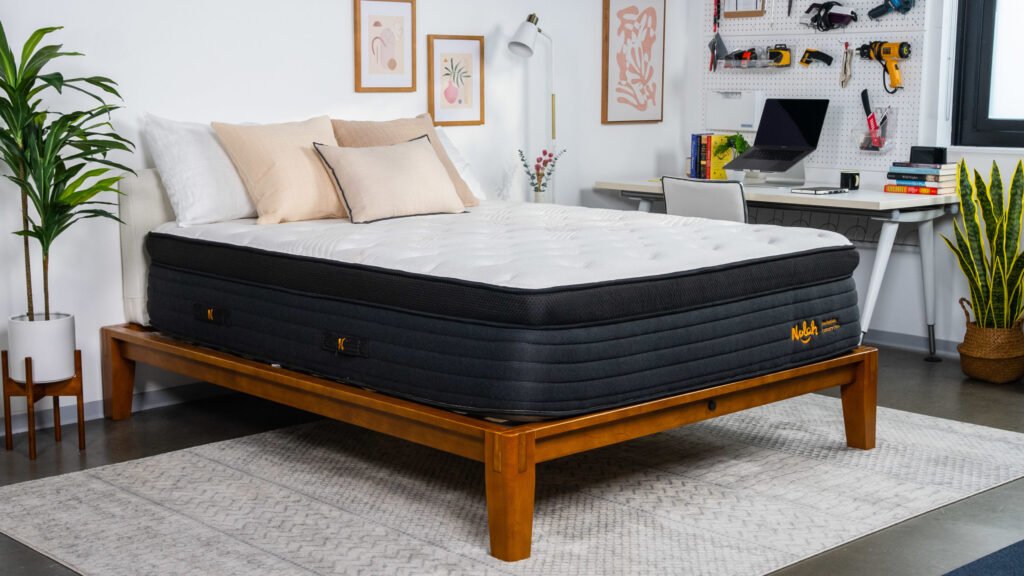
5.2. Zoned Support
Zoned support refers to mattresses designed with varying firmness levels across different areas. This feature is crucial for targeted back pain relief, especially in the lumbar region. My current mattress has enhanced support in the middle third, which aligns perfectly with my lower back, providing the relief I desperately needed.
5.3. Pressure Relief Layers
Materials like memory foam, latex, or gel-infused foam are excellent for pressure relief. These layers conform to your body’s shape, reducing tension and improving comfort. I found that a top layer of gel-infused memory foam not only eased my pressure points but also kept me cool throughout the night.
5.4. Coil System Type
Individually wrapped coils are superior to open coils for motion isolation and support. They adapt to your body’s movements, providing targeted support and minimizing disturbances from a partner’s movements. After upgrading to a mattress with pocketed coils, my sleep quality improved dramatically, and I no longer woke up from every toss and turn.
5.5. Edge Support and Motion Isolation
Strong edge support prevents sagging and makes it easier to get in and out of bed. Motion isolation ensures that movements on one side of the bed don’t disturb the other. As someone who shares a bed, these features have been game-changers. I can now sleep soundly without being jolted awake by my partner’s movements.
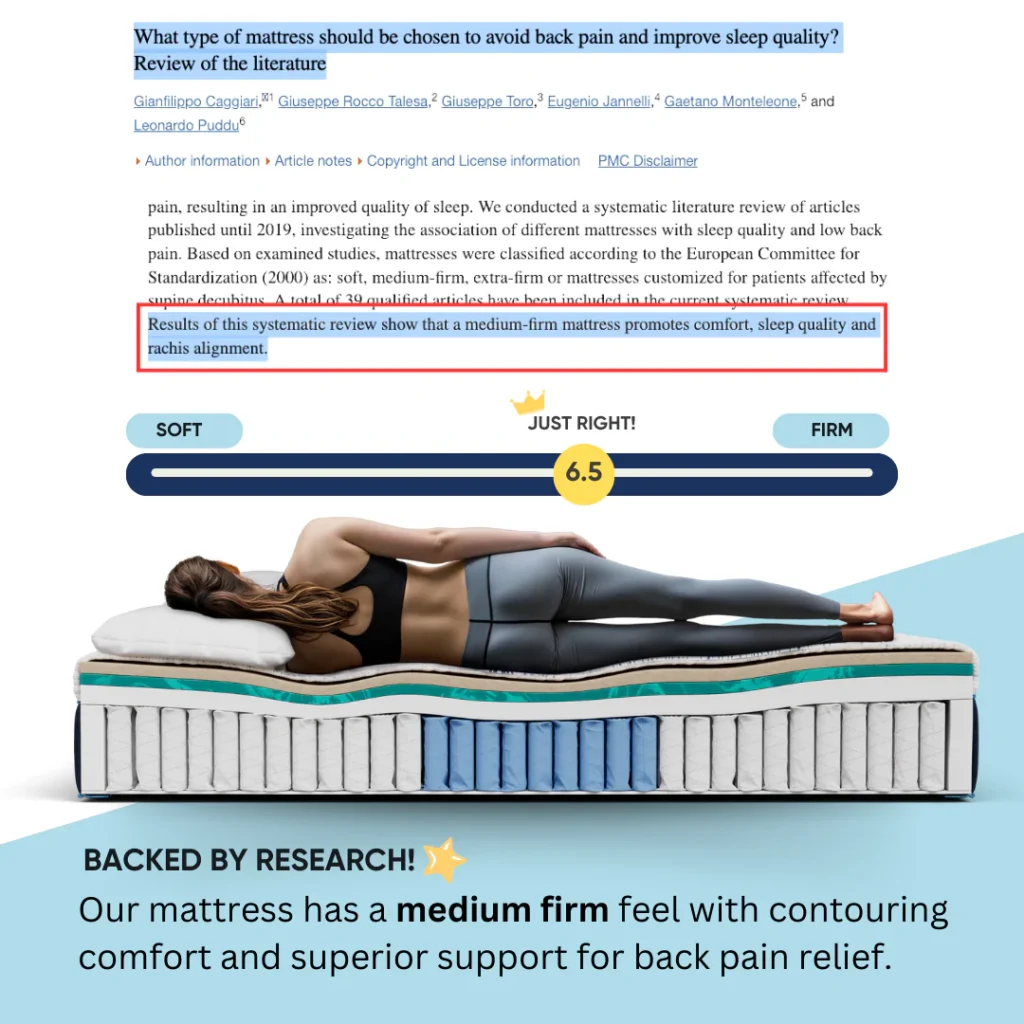
Real-Life Mattress Testing Tips
If you’re dealing with back pain, don’t just take a mattress at face value—test it like your sleep depends on it (because it does). I used to think you could just read reviews and pick the best-rated one. Nope. My back quickly taught me that real comfort is personal.
Start with the basics: Lie down on the mattress like you’re going to sleep. Not for 30 seconds—give it at least 10–15 minutes. Roll onto your side, your back, even your stomach (if you sleep that way). Pay attention to how your lower back feels. Is there a gap? Too much pressure on your hips? Those are red flags.
Snippet-ready tip: When testing a mattress, lie in your usual sleep positions for 10–15 minutes to check for pressure relief and spinal alignment.
If you’re buying online like I did, home trials are your best friend. Many brands offer 90 to 365-night trials. I used mine like a science experiment. Each morning, I checked in with my body—Was I waking up sore? Did I sleep through the night? Was my lower back stiff or relaxed?
For me, the game-changer was realizing that spinal alignment wasn’t just about firmness. it was about balance. The mattress I eventually chose gave enough under my shoulders and hips but still held my lumbar region in place. No more weird dips or crooked mornings.
At one point, I tested a mattress that felt great at first—super plush and cozy—but after a week, I started waking up stiff again. Turned out it was too soft, and my spine was curving too much overnight. That’s when I learned the value of zoned support firsthand.
Snippet insight: Even a mattress that feels comfortable short-term can cause pain if it doesn’t support your spine evenly throughout the night.
Bottom line? Listen to your body. Morning soreness is feedback. If a mattress isn’t helping your back within the first couple of weeks, it probably won’t later either. Don’t settle just because it’s popular or expensive. Your spine deserves better.
Read More:
Baby Changing Tables: Do You Really Need One?
Organic and Eco-Friendly Baby Furniture Options for a Healthier Nursery
Space-Saving Baby Furniture for Small Nurseries
How to Choose Safe and Stylish Baby Furniture for Your Nursery
Top 10 Essential Baby Furniture Pieces Every New Parent Needs
The Ultimate Guide to Choosing Baby Furniture
Top Mistakes to Avoid When Choosing a Mattress for Back Pain
Let me save you some pain literally. When I was mattress hunting to fix my back issues, I made a few mistakes that cost me sleep (and money). If I could go back, I’d steer clear of these traps. Here’s what I learned the hard way so you don’t have to.
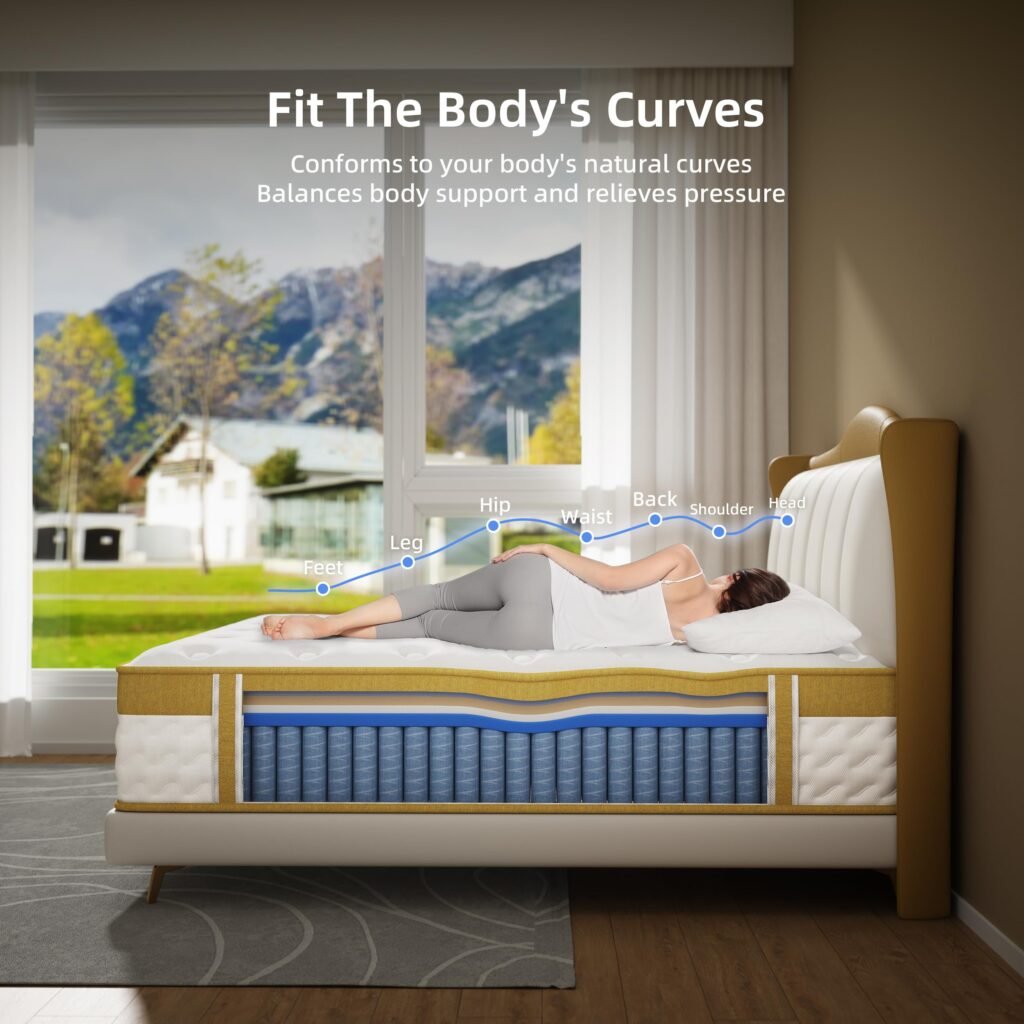
Mistake 1: Ignoring Firmness and Spinal Support
I once bought a mattress based on how “luxuriously soft” it felt in the store. Huge mistake. It felt amazing for five minutes… and then my back started screaming every morning.
Snippet-ready insight: A mattress that’s too soft or too firm can throw your spine out of alignment and make back pain worse.
For back pain, you need balance not a cloud, not a rock. Medium-firm support worked best for me. It cradled my pressure points but still kept my spine in check. So don’t fall for the plush trap your back will thank you.
Mistake 2: Choosing Based on Price Alone
I get it. Mattresses are expensive, and it’s tempting to grab a deal and hope for the best. I did that once with a budget hybrid that looked great on paper. It sagged within months.
AEO answer: A cheap mattress may save money short-term, but it can worsen back pain and cost more in the long run.
Now, I’m not saying you need the most expensive option but think of your mattress like shoes for your spine. Invest in one that actually supports your body. A good hybrid can last 7–10 years with proper care. That’s a smart long-term move.
Mistake 3: Skipping the Sleep Trial
I used to think sleep trials were just a marketing gimmick until I got stuck with a mattress that made my back pain worse and couldn’t return it. Lesson learned.
Voice search tip: Always choose a mattress with a sleep trial so you can test how it supports your back overnight.
The truth is, your body needs time to adjust. I tried one mattress that felt great on day one but wrecked me by week two. Thankfully, the trial saved me. Use that trial period like a test drive track your pain levels, how well you sleep, and how you feel in the morning.
Mistake 4: Forgetting About Sleep Position and Body Weight
This one hit me later: not all bodies need the same kind of support. I’m a back and side sleeper, around 180 pounds, so I need something that supports my lumbar spine but also cushions my shoulders.
AEO insight: Your sleep position and body weight affect how a mattress feels and performs don’t ignore them when choosing.
If you’re lighter, a mattress might feel firmer than advertised. Heavier? It may sink more than you expect. Knowing your sleep style and weight helps you choose the right firmness and support zones. It’s not one-size-fits-all and that’s okay.
My Personal Journey to Finding the Best Hybrid Mattress (Personal Experience Section)
Finding the perfect mattress for my back pain wasn’t as simple as walking into a store and picking the most expensive one. Oh no, it was a full-on trial-and-error process. I spent months literally months testing mattresses, reading reviews, and hoping that the next one would be the magic fix. Let me tell you, I had my fair share of awkward mornings where I regretted my decision the second I got out of bed.
One of the biggest challenges I faced was figuring out exactly what I needed. At first, I was convinced I needed something super firm thinking that would be the key to back pain relief. But after testing a few “rock solid” mattresses, I quickly learned that they just weren’t working. My back felt like it was being held in place, but there was no cushion, and the pressure points got worse. It was like sleeping on a board.
Then, I tried out a mattress that was way too soft. It felt like sleeping in a cloud, but the second I woke up, my back was stiff and sore. It turns out that I needed something in the middle a mattress that offered a balance between support and softness.
Finally, after a lot of trial and error, I found the perfect hybrid mattress. It had the right mix of medium-firm support and soft, pressure-relieving layers. The key for me was zoned support. The middle third of the mattress gave me extra support in my lower back, which was exactly what I needed. I wasn’t waking up with that nagging ache in my spine anymore, and for the first time in a long while, I felt genuinely rested when I woke up.
The model that worked best for me was the hybrid mattress. It has individually wrapped coils, which help isolate motion great for anyone who tosses and turns or shares a bed. Plus, the gel-infused memory foam kept me cool, which was a huge bonus for my sleep quality. It was one of those “aha” moments when I realized that the right mattress doesn’t just improve your sleep; it improves your quality of life.
In the end, it wasn’t just about picking the most popular mattress or the one with the best reviews. It was about finding what worked for my unique needs and body type. And if you’re in the same boat, I can’t recommend enough that you take your time, test different models, and listen to your body. The right mattress can make all the difference.
Final Buying Checklist: Best Hybrid Mattress for Back Pain Relief
Alright, if you’ve made it this far, you’re probably like me—ready to stop waking up sore and finally get a mattress that actually helps your back, not hurts it. I know how confusing the shopping process can be, so here’s the no-fluff checklist I wish I had when I started. These are the exact things I looked for (and tested) before finally landing on a mattress that changed my sleep for the better.
Medium-Firm Feel
Snippet-ready insight: A medium-firm hybrid mattress is often the sweet spot for back pain—it supports your spine without feeling like concrete.
When I switched from an ultra-soft mattress to a medium-firm hybrid, I noticed the difference in one night. It gave me enough give to ease pressure but still kept my spine straight. If your mattress is too soft or too firm, your back ends up doing the heavy lifting—and trust me, it pays the price.
Zoned Support
AEO answer: Zoned support provides firmer sections where you need it most, especially under your lower back.
My mattress had a firmer zone in the center third, and I honestly didn’t expect much… until I realized I was waking up without that usual ache in my lumbar area. It was subtle but effective—like someone gently guiding my spine into alignment overnight.
Quality Comfort Layers
Short answer for snippet: High-quality comfort layers (like memory foam or latex) help relieve pressure and boost spinal comfort.
Not all foam is created equal. I found that gel-infused memory foam felt cooler and more supportive, while cheap foams felt like sinking into quicksand. Look for layers that contour your body, not swallow it.
Sturdy Coil System
AEO-friendly takeaway: A strong coil base keeps your back supported and helps the mattress last longer.
I went with individually wrapped coils, and they’ve made a huge difference in both support and motion isolation. No more rolling into the center or waking up when my partner moves. It’s the kind of support that holds up night after night—no sagging in sight.
Trial and Warranty
Quick answer: A generous sleep trial and long warranty protect your investment and give your body time to adjust.
The first mattress I tried didn’t work out—thank goodness for the 100-night trial. Sleep trials aren’t just a marketing trick; they’re your safety net. And make sure there’s at least a 10-year warranty to back up the mattress’s claims.
Backed by Reviews or Expert Opinions
Answer-first snippet: Verified reviews and expert opinions add trust and help you avoid duds.
I cross-referenced expert reviews and real user feedback before pulling the trigger. Look for consistency in what people say—if back pain relief keeps coming up, that’s a good sign. And trust your gut when reading reviews. If it sounds too good to be true, it probably is.
Pro Tip: Screenshot or write this checklist down before you start shopping—it’ll keep you focused when the options start to blur.
Final Verdict: Choosing the Best Hybrid Mattress for Back Pain Relief
If you’ve made it this far, first—thank you. I know how frustrating it can be to wake up every morning feeling like your back’s been through a wrestling match. I’ve been there, and I don’t wish it on anyone. But here’s the good news: choosing the right hybrid mattress can make a real difference. For me, it truly did.
Quick Answer: The best hybrid mattress for back pain relief offers medium-firm support, zoned comfort, and quality materials that align your spine and ease pressure points.
After months of testing, tossing, and returning, I learned that there’s no perfect “one-size-fits-all” solution. But there is a perfect match for your body—if you take the time to listen to it. A mattress that feels just right can mean the difference between waking up tired and sore… or feeling like a real human again.
Here’s what I found worked best:
- Medium-firm feel for balanced support.
- Zoned support that targets the lower back.
- Pressure-relieving foam layers to reduce tension.
- Pocketed coils to keep things stable (and quiet!).
- A generous sleep trial to test it all out.
It might take some trial and error—but that’s okay. Honestly, it should. You’re not just buying a mattress. You’re investing in better sleep, less pain, and a more comfortable life.
Voice Search Snippet: To choose the best hybrid mattress for back pain, look for medium-firm support, pressure-relieving foam, and zoned coils to keep your spine aligned.
So, friend to friend: trust your body. Test the mattress. Keep track of how you feel in the morning. Your back will tell you everything you need to know.
Now it’s your turn—have you found a mattress that helped your back pain? Got questions about firmness, sleep trials, or brands I tested? Drop a comment below—I’d love to hear your story and help however I can.
Because we all deserve a bed that helps us heal—not one that holds us back.
Read More:
Secrets to a Memory Foam Topper on Memory Foam Mattress
How to Clean Urine from a Mattress Quickly and Easily
Why Hybrid Mattresses Are a Game-Changer for Side Sleepers
The 8 Best Cooling Sheets For Hot Sleepers, Tested And Reviewed
Top 10 Hybrid Mattresses of 2024: Our Picks for Comfort and Support
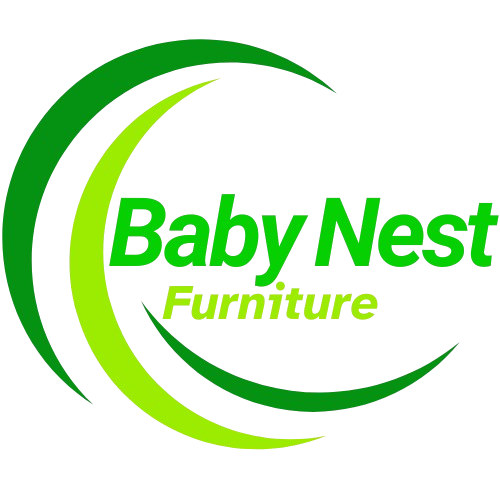
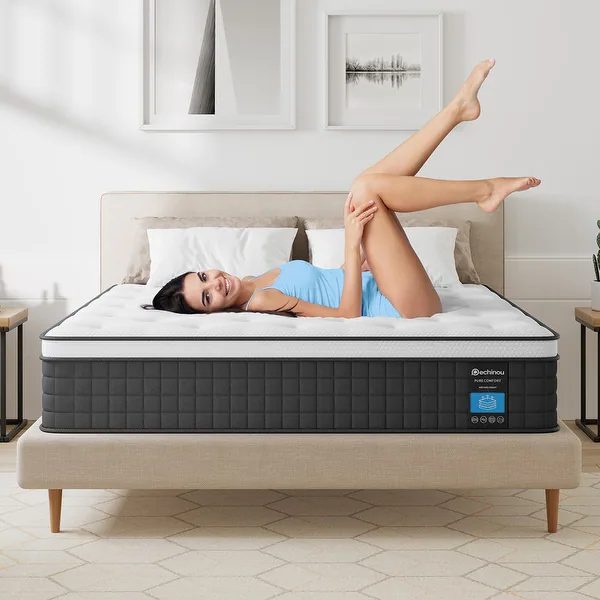
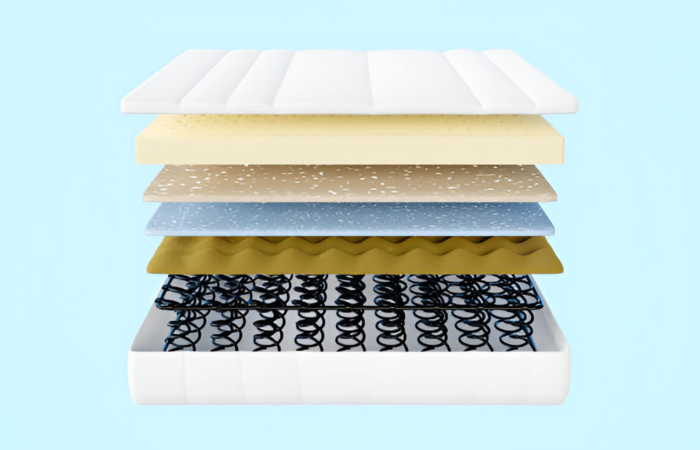
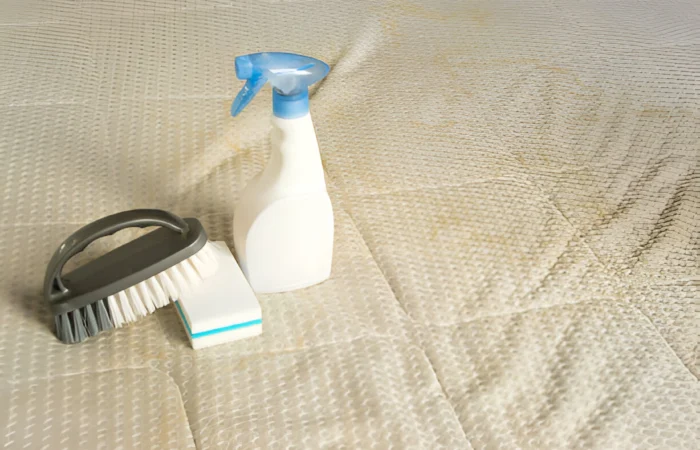


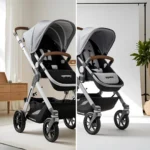
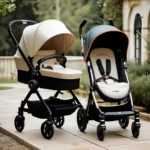

Leave Your Comment: